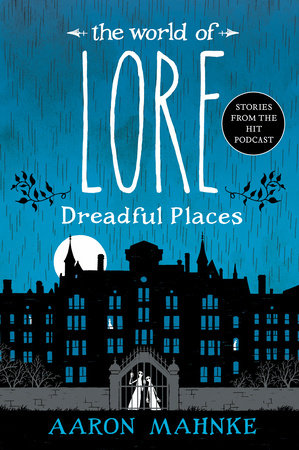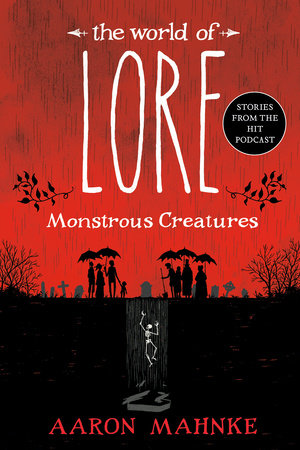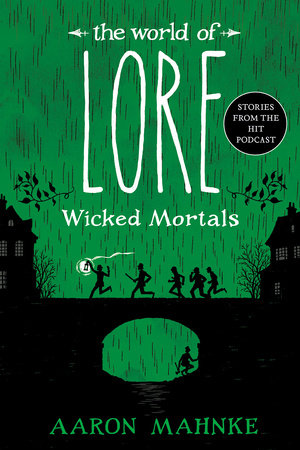Excerpt
The World of Lore: Dreadful Places
Dark ImportsThe places we live have a way of coming to look like us over time. It’s almost as if people inject their true nature—those passions and priorities and all the intimate details of the heart—into the very fabric of the place they call home.
Just look at the big cities of the world, and you’ll see human nature written in their architecture. The beautiful façades of London, one of the world’s leading financial centers, practically drip with wealth and power. The glassy skyscrapers of Dubai stand as an outward expression of an inward love of achievement. When we spend enough time somewhere, we have a tendency to build it in our own likeness.
And that’s true of the darker aspects of life as well. Think of the number of cities in America with neighborhoods built around social status or ethnic identity. Or the bright, attractive lights of Las Vegas surrounded by barren desert, as if that tug-of-war between our desperation and dreams had come to life. Our cities are a part of us. In some ways, they are us.
Cities are often described as being alive, as having a pulse and a heart, and we, the people, are their blood. We personify them to the point where they are indistinguishable from the humans who built them. In 1946, the well-known American-turned-British-aristocrat Lady Astor visited the city of Savannah, Georgia, and described it as “very much like a beautiful woman with a dirty face.” It had an aura about it, something dark and unclean, that seemed to blur the obvious beauty of the place. And maybe she was on to something. In the decades since, Savannah has become known as the most haunted city in America.
Now, I’m not sure how you measure that sort of characteristic, or if you can even declare something like that to be an indisputable fact. Still, according to those who live there, Savannah is home to a lot more darkness than we might realize.
And considering its grim past, it’s easy to understand why.
Ebb and Flow
When Americans talk about the original thirteen colonies, they’re talking about the seeds that grew into the country we have today. Thirteen separate settlements that grew into territories, and then—eventually—the first thirteen American states. The oldest colony, Virginia, dates back to 1607, while Georgia didn’t receive a charter until over a century later, in 1732. They were the last to show up at the party, so to speak.
The leader of the Georgia colony was a man named James Oglethorpe, and he had two very specific goals for the settlement there. First, it would be a buffer territory between the other British colonies to the north and the Spanish to the south. And so slavery was actually illegal, because Oglethorpe didn’t want a colony full of soft, lazy white men; he wanted soldiers.
Second, he envisioned Georgia as a new home for the hopeless of England. People who had served time in jail for debt but were trying to rebuild their lives. Or—as Oglethorpe described them—the “worthy” poor. It was meant to be a humble community, with smaller estates and more purpose behind the land division.
Oglethorpe and his team of 120 colonists arrived on February 12, 1733, and immediately did what English settlers were experts at doing: they approached the indigenous people who already lived there and negotiated for the best land. As a result, those original native inhabitants had to move inland. Shocking, I know.
Oglethorpe’s prize was a bluff overlooking the mouth of the river, and it was there that he laid the foundation for a new city. He called it Savannah, named after the river itself, and set about planning every square foot of the place. In fact, it was America’s first planned city, with an almost obsessive arrangement of public squares surrounded by streets aligned to a tidy grid. And I’m going to be honest with you—as a former designer, I love it.
Four decades later, after the colonies broke off from England, Georgia legalized the ownership and forced labor of other human beings, allowing rich white Georgians to build a powerful economy on the backs of slaves. In fact, years later, in 1859, Savannah would be the location of one of the largest sales of human lives in American history. Nearly 450 men, women, and children were sold over the course of two days, breaking up nearly a hundred families. It’s said that torrential rains fell during the entire event, leading those who were trapped in that system to refer to it as “the Weeping Time,” as if the heavens themselves were broken by the tragedy of it all.
Slaves allowed the rich to get richer in Georgia, and as the port city, Savannah became the place through which all that wealth flowed. But it wasn’t all sunshine and roses for the white people of Savannah. As the years ticked by, the community there had to endure a number of darker events, moments of tragedy that left bruises on the city’s history. And the first of those happened in 1796.
That was the year that a fire broke out in the bakery owned by one Mr. Grommet. On the evening of November 26, a fire started in his unoccupied shop and then moved to neighboring structures. Thanks to a two-month-long drought and an inadequate fire service, the blaze spread quickly and eventually destroyed over two hundred homes and 150 other buildings—roughly one-third of the entire city.
Another fire occurred in January 1820, destroying nearly five hundred buildings and leaving two-thirds of the city’s inhabitants completely homeless. Later that year, while so many people were outdoors rebuilding their homes, heavy rain and hot weather led to a perfect breeding ground for mosquitos, which began the spread of yellow fever. By the time it finally ran its course, the epidemic had claimed nearly seven hundred lives, more than 20 percent of the city’s population. It was described by one witness as a “scene of sickness, misery and ruin.”
Forty years later, after capturing Atlanta in September 1864, Union General William Tecumseh Sherman led sixty-two thousand soldiers south toward Savannah. Less than a month after their arrival, the city fell. And while the city was spared the destruction that Sherman had built a reputation for, smaller battles around the city took hundreds of lives. Five months later, the war was over.
A decade after that, yellow fever returned, moving across the city like a tidal wave and taking another thousand lives with it. There are rumors that city officials hid many of the bodies in underground tunnels beneath the former Candler Hospital in an effort to hide the severity of the outbreak. While those stories can’t be entirely validated, we do know those same tunnels were once used by the hospital for autopsies.
Everywhere you go in Savannah, it seems there’s a bit of history lurking in the background. It’s an ancient city, at least by American standards, and you can feel it in the genteel pre–Civil War architecture. Just take a walk along historic River Street, past the centuries-old warehouses that now play host to taverns, hotels, and boutiques, and you’ll see what I mean. It’s beautiful, in a haunting sort of way.
There’s something else, though. Something lurking at the edges like a shadowy figure, waiting to reveal itself. Maybe it’s the gloom of those shady squares, or the tangle of Spanish moss that hangs off so many of the trees like the web of some unnatural spider. Savannah has just as much darkness as it does beauty.
And then, of course, there are the ghosts.






